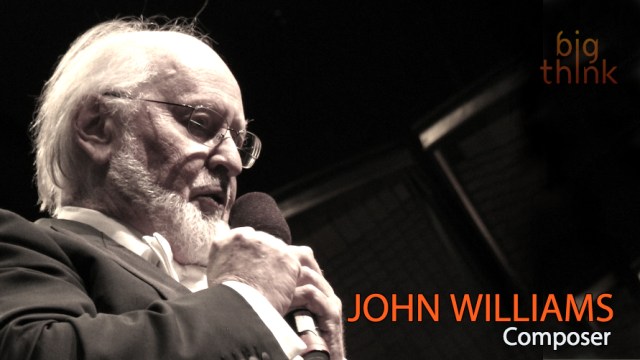Forbidden Fruit: To See or Not to See Nazi Propaganda Films?

On January 1, 2016, one of the most infamous books of the 20th century — Adolf Hitler’s Mein Kampf— enters public domain and can be published by anyone in Germany for the first time since the end of World War II. Seventy years after the fall of the Nazis, people still debate allowing that particularly evil genii out of the bottle to influence young minds. Others argue that the genii’s been out of the bottle all along, either through underground sources or, more recently, the Internet. More controllable, however, have been the propaganda films of the Nazis, whose chief propagandist, Joseph Goebbels, announced in 1941 that, “Film is our most important medium for propaganda.” Felix Moeller’s new documentary Forbidden Films: The Hidden Legacy of Nazi Film examines this question of allowing new generations to see these banned films and, if so, how to show them without that evil history repeating itself.
About 1,200 feature films were made in Germany’s Third Reich between 1933 and 1945. Although most were made and intended as pure entertainment, experts target approximately 100 as blatant propaganda, with the 40 worst still banned in Germany. Moeller begins his story at the archives holding the nitrocellulose copies of these films. An archivist points to the special precautions taken to contain the unstable, potentially explosive film stock. Both physically and metaphorically explosive, these films are rotting away in their canisters, fated to disappear unless they are preserved and digitized — a kind of revenge by neglect. Whether they should be allowed to die or to live again on screens is the question at the heart of Forbidden Films.
Moeller presents both sides of the argument fairly and fully, while also allowing the banned films to “speak” for themselves through short clips that are, at times, troubling not just for their content, but also for their seductive entertainment value. Moeller himself admits in an interview the still-potent siren call of these films as entertainment. “The songs and marches, especially, really stay with you,” the filmmaker confesses. “You inadvertently find yourself whistling along to “Unsere Fahne flattert uns voran” (“Our flag flutters us forward”) from Hitler Youth Quex.” If Moller, a historian who’s studied the period extensively, couldn’t resist that particular earworm, what chance do less educated viewers have to resist the dark message wrapped in such light packaging?
That lack of education combined with greater access to these films is what worries critics most. Moeller takes you to some of the strictly controlled screenings of these banned films in Germany permitted for educational purposes and interviews the patrons. Most recount their sadness and shock over the films, both over the content and the entertainment values, but the earnest young man who bought into the twisted historical premise of the 1941 film Homecoming (German, Heimkehr;directed by Gustav Ucicky) makes you pause.
Homecoming tells a tale of ethnic Germans in Poland before the war being terrorized by the Polish nationals, who want to expel or exterminate the innocent Germans. When Polish children chase a young German woman and pelt her with stones after a coarse Polish man rips the swastika chain from her throat (film still shown above), “It’s hard not to hate [the Polish characters] when you watch it,” one expert admits. Fortunately for the ethnic Germans, who have been imprisoned for their resistance, the German army comes riding to their rescue by (justifiably) invading Poland. The film ends with a rousing final song as the ethnic Germans finally receive the titular homecoming, passing at the German border a huge banner showing their smiling, welcoming savior — Hitler.
Homecoming, of course, is pure Nazi fantasy to justify the invasion of Poland. In an amazing case of psychological projection, all the evil acts of the Nazis are transferred to the Polish: cruel nationalist and racial policies, genocide, physical intimidation all the way up to state-sponsored torture, and even book burnings. For someone who knows the true history, Homecoming is laughable. For someone who doesn’t know or questions the true history, Homecoming is a revelation. Moeller interviews two former neo-Nazis (who sit in a darkened theater to protect their identities) who explain how such absurd films as Homecoming achieve cult status among “the Nazi scene.” If it’s banned by the government, such people reason, it must be banned for a reason. For them, the ban becomes a repression of untold truths rather than a form of protection from past evil. The forbidden fruit of these banned Nazi films tastes all the sweeter for being a form of rebellion.
Education stands at the center of the argument of those who want the films preserved and shown again. Jud Süß (“Jew Suss” in English), the infamous 1940 film encompassing, as one critic puts it, “the grammar of anti-Semitism … money, sex, conspiracy, and infiltration,” makes many ill simply because it is such effective filmmaking in terms of emotionally manipulative storytelling. Another critic confesses that the theme of Jewish global takeover in Jud Süß is so insidiously subconscious that sometimes “even professionals can miss it.” Yet, if one misses such aspects, isn’t the film to blame? No, counters another critic. If you agree with the premises of Jud Süß, he points out, “The miseducation’s already happened.” This form of dysconsciousness, an uncritically thought out personal conception of race formed by osmosis from the surrounding culture’s racial issues, can only be combatted by critical thought, which can only be achieved through a clear-eyed viewing of the problem itself, as so perfectly packaged in films such as Jud Süß.
Moller’s Forbidden Films: The Hidden Legacy of Nazi Film admirably demonstrates that the question of showing these banned films is neither purely academic nor purely buried in the past. When one patron links the money-mad, anti-Semitic stereotypes of 1940’s The Rothschilds to the anti-Semitism linked to the 21st century story of Bernie Madoff, the implications for today are clear. If The Protocols of the Elders of Zion and other anti-Semitic, globalization conspiracy theories can still exist in so many warped, unenlightened imaginations, then a critical assessment of the history of those ideas descended from the Nazi period is long overdue. As Goebbels himself put it, “Film is the educational tool to teach our young people.” Forbidden Films takes Goebbels’ own words and turns them in the right direction by suggesting that to use these films to look into our own hearts and shape the hearts of future generations is to turn them into a tool for righteousness — the best, most positive revenge I can think of.
[Image: Film still from Homecoming (German, Heimkehr), directed by Gustav Ucicky, 1941.]
[Many thanks to Zeitgeist Films for providing me with the image above from, press materials related to, and a review copy of Forbidden Films: The Hidden Legacy of Nazi Film, a documentary by Felix Moeller.]
[Please follow me on Twitter (@BobDPictureThis) and Facebook (Art Blog By Bob) for more art news and views.]




